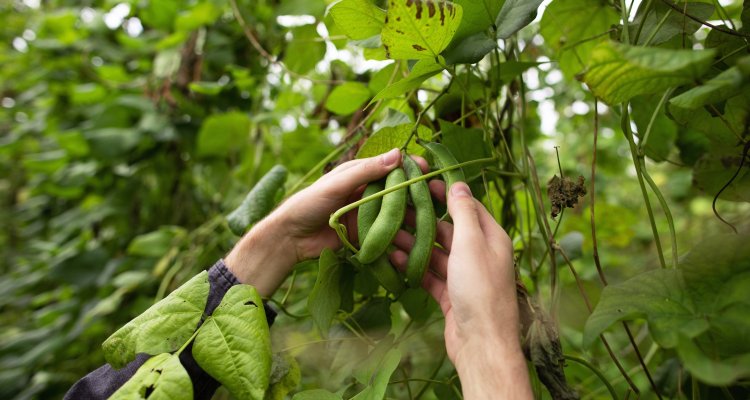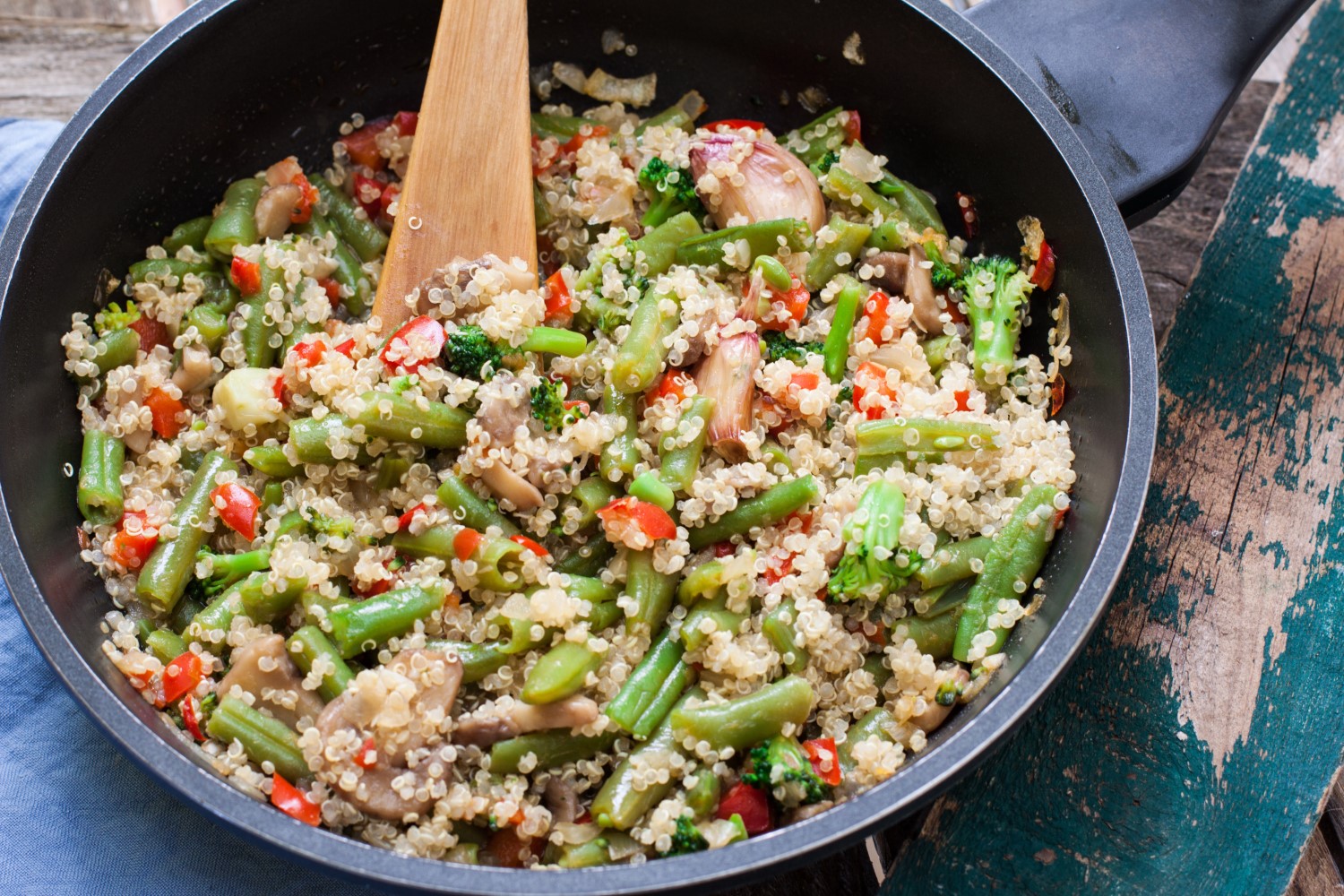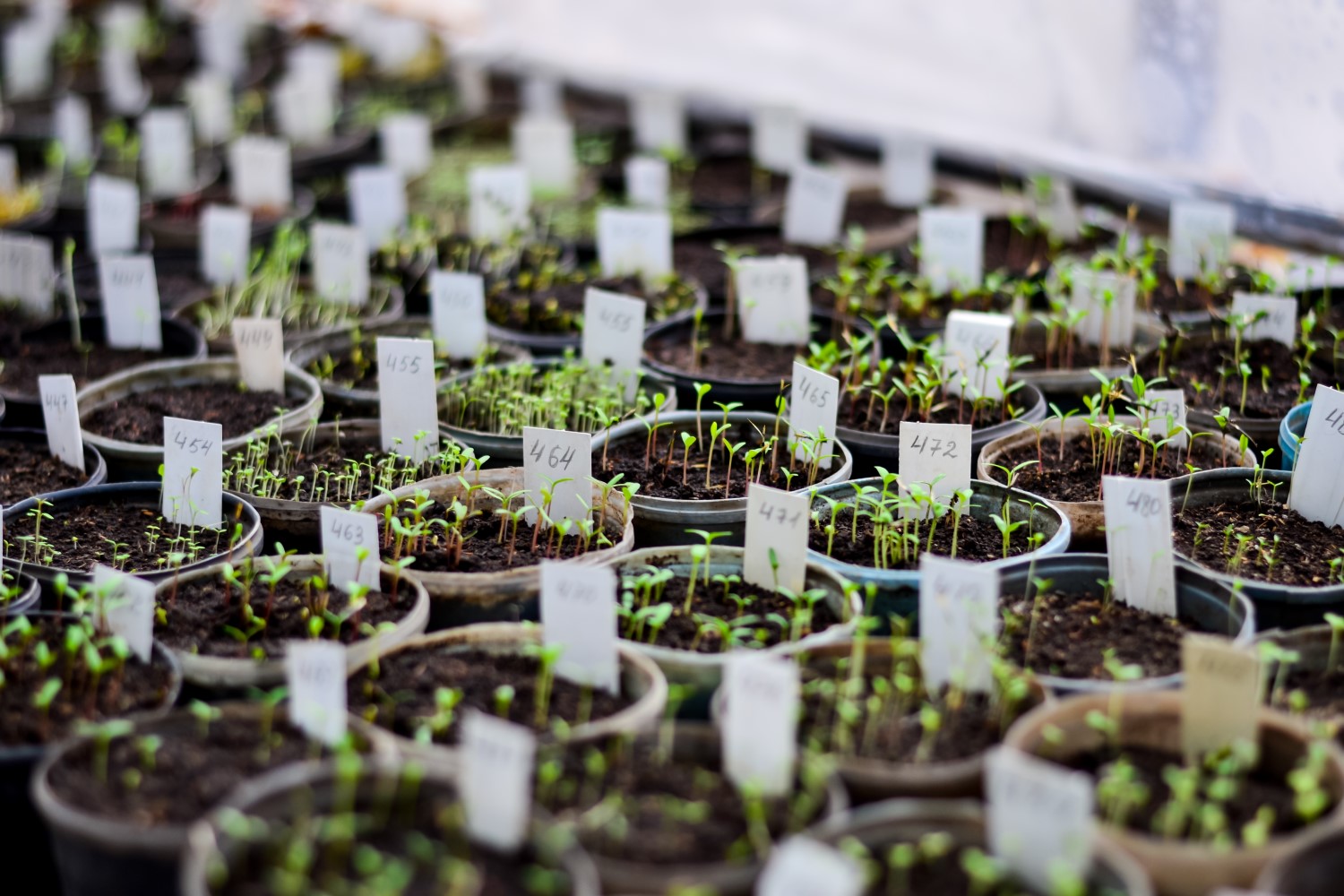
Background
High-quality legumes could trigger the protein transition
Beans, peas and other legumes are healthy and sustainable. So why don't we eat more of these foods in the Netherlands? A lot of effort has been made to entice consumers, but, so far, it hasn’t made much difference, according to Stacy Pyett, programme manager for Proteins for Life at WUR. “We could do much more to incentivise farmers to grow legumes.”
If you were to randomly select a hectare of agricultural land to explore, it’s unlikely you’d find yourself surrounded by bean plants. Less than one per cent of agricultural land in the Netherlands is used to grow legumes, which are full of plant-based proteins. That amounts to 25,000 hectares. By way of comparison, 65% of agricultural land is devoted to animal protein production, in the form of pasture and fodder crops for livestock.
There’s been a modest upward trend in the production of plant-based protein over the past few years. This is an important development, because transitioning from animal to plant-based proteins will help to combat global warming and to tackle the nitrogen challenge. However, it would be a stretch to say that everyone in the Netherlands has embraced lentil soup. The average Dutch diet still includes more animal proteins than plant-based ones.
Initiating a protein transition
Meanwhile, the livestock population needs to be reduced because of its impact on the environment and climate, and farmers are worried about their future. Amidst all this uncertainty, the production of plant-based protein could open up a whole range of opportunities for farmers and for the economy, says Stacy Pyett, programme leader for WUR’s research into the protein transition. And yet the pace of this transition from animal to plant-based proteins is so slow. What’s the problem?

Everyone is waiting for one another, which means the protein transition isn’t gaining momentum
Pyett feels there’s a clear answer to this: it’s because so little effort is being made across the supply chain, from farmers through to the processing industry and consumers. At the consumer end, there’s too little appetite for beans. The processing industry wants to deliver on all the various aspects of what consumers want, but struggles to do so with the range of legumes currently available. And farmers are waiting for legumes that will deliver better yields on Dutch soil. “Everyone’s waiting for each other, and that’s why the protein transition isn’t gaining traction.”
Increasing yields
“At the moment, we grow a lot of Dutch brown beans in the Netherlands, but we could be growing a lot more broad beans, yellow peas, soy and lupin beans,” says Pyett. That’s not really happening much right now. The yields of those crops are relatively low, which means farmers don’t earn enough from them. Farmers growing broad beans, for example, need to realise seven to eight tonnes per hectare to make it a financially viable crop. Only a small number of farmers who have started growing broad beans have been able to do that. The rest realise five tonnes per hectare on average, and make a loss. “That’s disincentivising for them and for any other farmers who have considered making the switch.”
The broad beans currently grown on Dutch fields aren’t fully adapted to the Dutch soil and climate. “That means there’s potential to increase yields, which in turn requires plant breeding. Oddly enough, plant breeding for legumes pretty much ground to a halt years ago, in some cases thirty years ago,” says Pyett ruefully. It’s a problem for soybeans too. “Soybeans from Eastern Europe have already been introduced in the Netherlands, but they weren’t profitable either. It’s a pity, because people now think it’s impossible, when in fact it’s perfectly possible to breed soybeans to achieve higher yields in the Netherlands.”
No obstacle
The spread of an entirely different crop – quinoa – shows what a difference plant breeding can make. Quinoa was originally grown mainly in Peru and its neighbouring countries, but has since been adapted to grow in more temperate climates. WUR played an important role in breeding the crop. “Quinoa is now grown in dozens of countries, perhaps even a hundred. Including the Netherlands,” says Pyett.
So as far as she’s concerned, there’s no obstacle to making legume cultivation profitable for Dutch farmers. She suggests the yellow pea as a suitable candidate, given that it’s already being grown on a large scale in France and Germany. “It’s the most widely used legume in food production, and could be bred to achieve a better yield in Dutch soils.”
- Unfortunately, your cookie settings do not allow videos to be displayed. - check your settings
She also sees opportunities for the large-scale cultivation of soy, lupin beans and indeed broad beans in the Netherlands. “It just takes time and money. A breeding programme can easily take eight to twelve years from start to finish. Lupin, for example, is still in its start-up phase, so we do need that time. With broad beans, we’re already halfway through, so we’ll get there sooner.”
Satisfying every demand
So, while it’s basically true that we can modify legumes to make them more appealing to farmers, that’s actually only half the story. The food industry also wants its perfect broad bean or yellow pea. “From the outset, breeders ought to consider what the food industry wants. After all, the industry really wants ingredients that are easier to process into a specific product.” That means working backwards from consumers to the processing industry and then to the breeder.
This whole-chain approach requires breeders and food scientists to work together, which is something that’s already happening for the breeding of broad beans at WUR. These beans have quite a distinct flavour. “Some people like it, but others don’t,” says Pyett. “So if you want to use broad beans in the production of meat and dairy substitutes, you need a more neutral flavour. That’s another thing you can try to achieve through breeding.” The research has identified 52 varieties of broad bean. These are now being thoroughly tested so that the most appropriate ones can be selected for processing into finished products.
Multiple cogs in the wheel
Pyett is focusing on the supply chain in its entirety, which means she has a good grasp of all the little cogs that need to turn to accelerate the protein transition. One of them is the use of residual streams. At the moment, it’s mainly the beans themselves that find their way to consumers and the industry processing the proteins. But the plants contain other nutrients, such as starch and fibre. These, too, could potentially be used in food or as food for bacterial protein production or mushroom cultivation. Experiments have already been conducted on this in the laboratory, but the research is really still in its infancy.

If farmers gain access to well-adapted crops, making the switch becomes more interesting
One final cog in the wheel of the transition is health research. There appears to be a lot of unexplored territory here. What would be the health impact of increasing our legume consumption? Why do some people absorb plant proteins from legumes better than others? Do these differences mean we need personalised nutritional recommendations, or different industrial processing techniques? Pyett hopes that new insights into these issues will encourage people to increase their legume consumption.
Appealing to farmers
If consumer demand for legumes increases, Pyett expects the potential sales market for Dutch farmers to grow too. And if they have access to well-adapted crops that enable them to satisfy demand, they will have an incentive to make the switch. Especially if on top of getting more beans out of the plant, they can sell the rest of the plant too. Having worked with businesses and farmer organisations, she knows people are interested. “Some dairy farmers are keen to switch and start supplying the proteins of the future.'